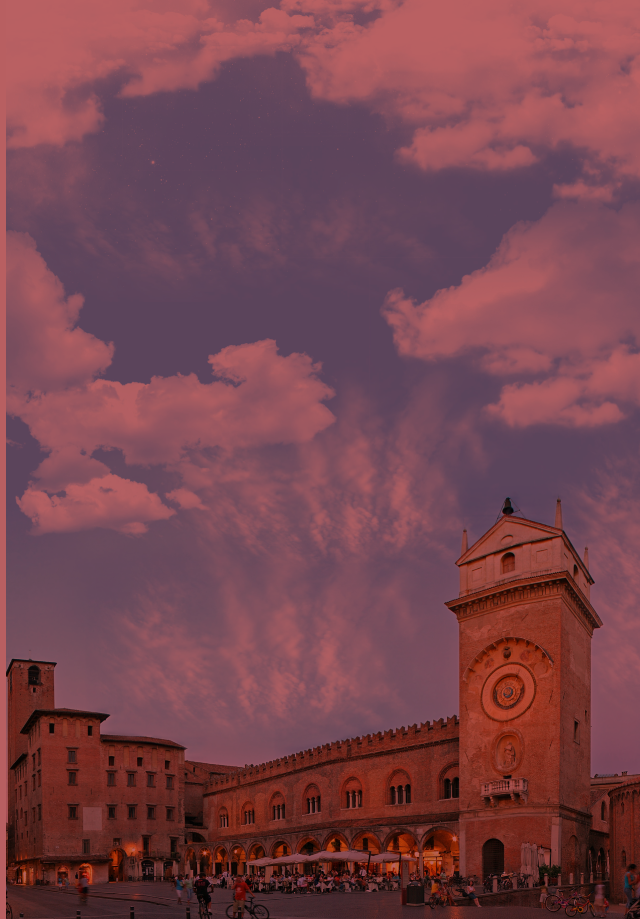LE VALLI DELL’OGLIO E DEL CHIESE
A journey through Palaces, Abbeys and Museums
5% Culture | 40% Nature | 15% Food & Wine
CASALMORO / ASOLA / ACQUANEGRA SUL CHIESE / CANNETO SULL’OGLIO
Culture
45
Food and wine
40
Nature
15
Itinerary description
Located along the western border of the province of Mantua, the Oglio and Chiese Valleys are characterized by their millennia-old history, which is deeply connected to the two rivers that define the area. Since prehistoric times, these waterways have significantly influenced the landscape, the development of local communities, and the cultural evolution of the region.
Today, the area offers an idyllic setting for a “slow” and sustainable tourism experience, rich in cultural significance—ideal for those who love immersing themselves in nature while discovering local traditions.
The journey begins in the charming rural village of Casalmoro, which dates back to Roman times and was the site of fierce medieval battles between the ruling families of Milan, Mantua, and Venice. Its historical and cultural heritage is best represented by Corte Castello, a fortified 15th-century mansion attributed to the Florentine architect Luca Fancelli (a pupil of Brunelleschi). Recently restored, it now serves as a venue for various events.
A few kilometers away lies Asola, the second stop on the tour. Sharing a rich and ancient history with Casalmoro, Asola’s past is documented through an exceptional exhibition at the Goffredo Bellini Civic Museum, which showcases archaeological finds, artworks, and historical documents.
Asola’s heritage is also evident in its religious architecture, such as the Cathedral of Sant’Andrea, as well as in the elegant Baroque lines of Palazzo Terzi and the Art Nouveau villas that characterize the town center.
Continuing south along the Chiese River, the route passes through Acquanegra sul Chiese, whose history was strongly influenced by the presence of the Benedictine Abbey of San Tommaso, first mentioned around the year 1000. The ruins of this ancient structure were later incorporated into the fascinating Parish Church of San Tommaso, a Romanesque church built in the 11th century.
Crossing the Chiese River, the journey quickly reaches Canneto sull’Oglio, the final stop. This captivating village is situated on the left bank of the Oglio River and serves as a gateway to the Oglio Sud Regional Park. The village has a deep connection to its natural environment, which has fostered a long-standing tradition of nursery farming. The medieval origins of Canneto are evident in the San Genesio Castle, the original nucleus of the town. Culturally, the elegant neoclassical architecture of the Mauro Pagano Municipal Theater (built in 1826) and the impressive Toy Collection at the Civic Museum stand out as must-see attractions.
The Mantova Strada Councils
Where
to eat
Where to
Taste
Accommodation
facilities
The stages
Casalmoro is a fascinating village with ancient origins, located along the banks of the Chiese River. Archaeological excavations have revealed evidence of human settlements dating back to the Neolithic period, but the first structured town developed during the Roman era.
The medieval name Casalis Mauris reflects its history of continuous territorial disputes between the ruling families of Milan (Visconti), Venice (Serenissima), and Mantua (Gonzaga). The latter ultimately secured control over the area, ruling until the Napoleonic era.
The symbol of Casalmoro’s turbulent past is Corte Castello, a defensive fortress from medieval times that was replaced in the 15th century by a noble residence designed by Luca Fancelli for the Gonzaga family. The building later served as a rural farmstead, but thanks to an extensive restoration project (2011–2018), it has been transformed into a multifunctional cultural center.
Another historical landmark is the Mangeri Tower, built during the rule of the Visconti as a customs outpost.
Religious architecture is also prominent in Casalmoro, including the Parish Church of Santo Stefano Protomartire (18th century, featuring a beautiful Baroque facade) and the Sanctuary of the Madonna del Dosso, also from the 18th century, with Neoclassical elements on the exterior and a sumptuously Baroque interior.
For nature lovers, the Parco del Moro along the Chiese River offers an excellent opportunity to enjoy the outdoors in a protected and biodiverse habitat.
With a millennia-old history, Asola boasts an abundance of archaeological, cultural, and architectural treasures. Excavations in the area have uncovered ancient necropolises in Sorbara and Baselle, revealing Bronze Age artifacts that provide a fascinating insight into the region’s history. Many of these artifacts are displayed in the Goffredo Bellini Civic Museum, housed in the historic Monte dei Pegni Palace.
The discovery of Asola begins in Piazza XX Settembre, home to the Town Hall, porticoes, and the Hercules Fountain, featuring a sculpture of Hercules crushing the Hydra.
A unique feature of the Cathedral of Sant’Andrea and Santa Maria Assunta is that it does not face the main square, but is located to the side. Built in the 15th century in Late Gothic style, the cathedral houses notable artworks, including the Antegnati organ, the painted choir loft, and the pulpit, decorated with frescoes by Romanino (1525).
Visitors can explore the town’s elegant buildings, such as Palazzo Terzi, named after Asola’s first mayor after Italian unification. The Theater Sociale, built in the late 19th century, is currently under restoration. The historic center showcases Liberty-style facades, with charming cafés and well-preserved decorative details.
Asola is also a significant stop on the Santa Giulia Pilgrimage Route, which retraces the longobardic journey of Saint Giulia’s relics, from Corsica to Brescia.
Strategically located near the confluence of the Chiese and Oglio Rivers, Acquanegra sul Chiese has Roman origins. The name derives from the Latin Acquanigra, referring to the dark color of the soil due to its peaty and clay-rich composition.
The town’s agricultural development was shaped by a thriving Benedictine community, which settled here around the year 1000.
The current Church of San Tommaso is what remains of a medieval abbey built in the 11th century. This Romanesque monastic church, with a Latin cross layout and three naves, has original perimeter walls, while the facade, side chapels, and bell tower were later additions.
Near the town, the WWF Oasis Le Bine, a wetland area separated from the Oglio River in the late 18th century, serves as a protected wildlife refuge.
Canneto sull’Oglio has always played a strategic role, particularly during the Middle Ages, when it lay on the border between the Duchy of Milan and the Venetian Republic.
The town’s origins date back to the 11th century, when the San Genesio Castle was built. Today, only its tower remains, standing in Piazza Matteotti, alongside the city clock and a 17th-century Madonna statue.
Nearby is the Mauro Pagano Municipal Theater, a neoclassical masterpiece (built in 1826).
A major attraction is the Civic Museum, home to the Giulio Superti Furga Toy Collection, which celebrates Canneto’s rich toy-making heritage. The museum also features the Valli Oglio Chiese Ecomuseum, highlighting the region’s natural and economic history, particularly its nursery farming traditions, which have flourished since the 18th century.
©2012 – 2022 Strada dei Vini e Sapori Mantovani | C.F. 93035440200 – P.IVA 02119480206 | Privacy Policy | Cookie Policy


